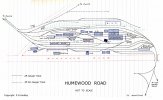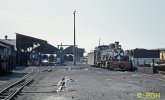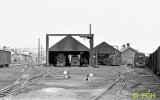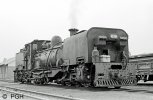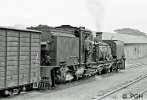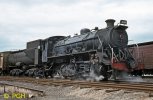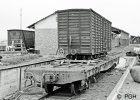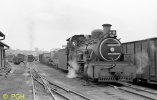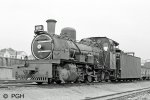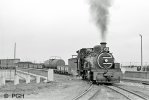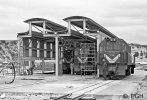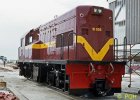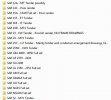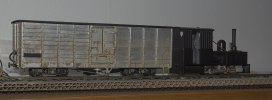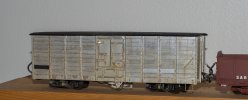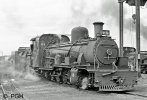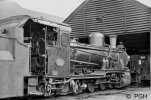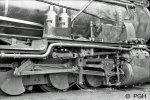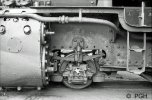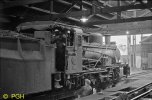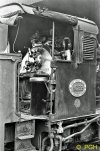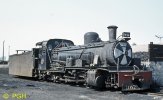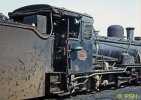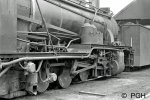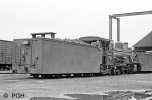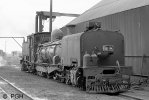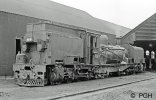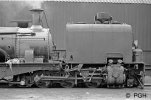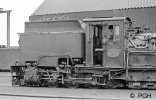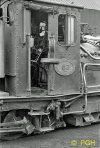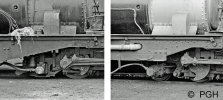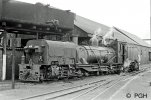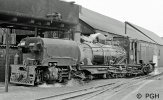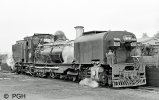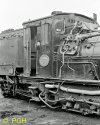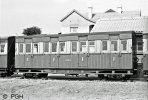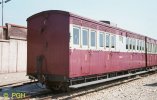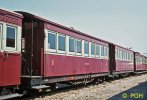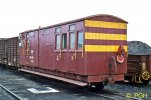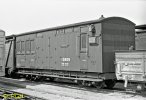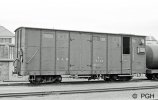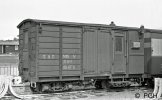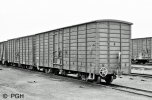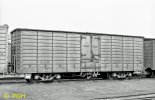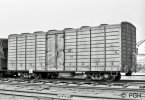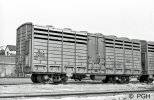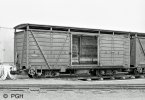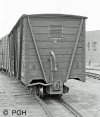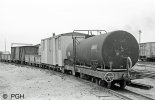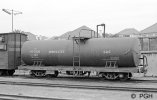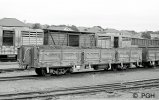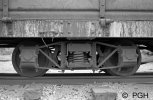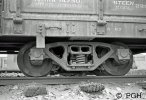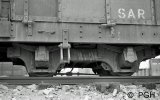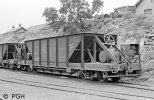PhilH
Western Thunderer
SOUTH AFRICAN TWO FOOT GAUGE RAILWAYS
This together with another topic on the rolling stock was posted some time ago in the other place, but its now devoid of photos so I thought it might be of interest to repeat the information here. Some of the locomotives pictured are now over here in the UK. The black & white photos were originally scanned from postcard prints but I've since been able to scan the negatives so the photographs should be a little bit better.
The photos were taken in September 1973 during a 3 week visit to South Africa, split roughly equally between Main Line, Narrow Gauge and Industrial systems. Four of the five operating 2ft. gauge systems were visited - the Port Elizabeth to Avontuur line in Cape Province and the Port Shepstone to Harding; Umzinto to Donnybrook; Umlaas Road to Mid Illovo lines in Natal. The only line I couldn't fit in was the Escourt to Weenen line which was the only line still running a regular scheduled passenger service.
Humewood Road was the main 2ft gauge station in Port Elizabeth and location of the locomotive sheds and workshop. Trains normally terminated here although it was not the end of the line as the 2ft gauge extended a further ¾ mile down to the harbour, the 3ft-6in gauge goods transhipment shed and the main line station. The locomotive facilities comprised three separate loco sheds, two with 2 roads and one single road, a 2 road workshop; coaling stage; ash pit and large rectangular water tank. The only freight traffic actually dealt with here seems to have been the transfer of livestock to the 3ft-6in gauge, for which there was a raised cattle dock served by both gauges. The 3ft-6in gauge also served the coaling stage, an end loading dock for 2ft gauge equipment and storage hoppers for transfer of ballast to 2ft gauge hopper wagons (some of which are now on the Welsh Highland Railway). The station itself was quite a modest affair comprising a short platform and collection of small buildings. Leaving the yard the line curved sharply to the right and crossed the road on a concrete bridge beyond which was a wye for turning locos and a connection to the new diesel loco depot, then in course of construction.
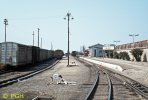
View of the passenger platform from the north (harbour) end
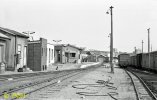
View of the passenger platform from the south (Avontuur) end
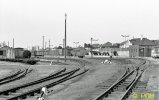
View of the yard from the north end with 3ft-6in gauge track in centre leading to the cattle dock and dropping down to the end loading dock.
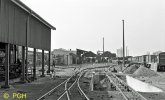
The Loco Depot with ash pit in foreground and single road shed to the left. The 3ft-6in gauge wagons on the right are being loaded with ash.
Loco sheds to the left beyond the one sided shelter; workshop in centre with the large rectangular water tank in front. At the coaling stage on the right is Class NG15 2-8-2 NG134, which is currently being rebuilt for service on the Welsh Highland Railway (more photos of that later).
The opposite end of the loco sheds with workshop in centre of photo. On the right hand road of the workshop is the Class NG11 Garratt NG55 under repair in three separate sections. This and its sister loco NG54 (which I didn't see on the visit) were normally used for shunting at Humewood Road and transfer freights down to the harbour.
This together with another topic on the rolling stock was posted some time ago in the other place, but its now devoid of photos so I thought it might be of interest to repeat the information here. Some of the locomotives pictured are now over here in the UK. The black & white photos were originally scanned from postcard prints but I've since been able to scan the negatives so the photographs should be a little bit better.
The photos were taken in September 1973 during a 3 week visit to South Africa, split roughly equally between Main Line, Narrow Gauge and Industrial systems. Four of the five operating 2ft. gauge systems were visited - the Port Elizabeth to Avontuur line in Cape Province and the Port Shepstone to Harding; Umzinto to Donnybrook; Umlaas Road to Mid Illovo lines in Natal. The only line I couldn't fit in was the Escourt to Weenen line which was the only line still running a regular scheduled passenger service.
Humewood Road was the main 2ft gauge station in Port Elizabeth and location of the locomotive sheds and workshop. Trains normally terminated here although it was not the end of the line as the 2ft gauge extended a further ¾ mile down to the harbour, the 3ft-6in gauge goods transhipment shed and the main line station. The locomotive facilities comprised three separate loco sheds, two with 2 roads and one single road, a 2 road workshop; coaling stage; ash pit and large rectangular water tank. The only freight traffic actually dealt with here seems to have been the transfer of livestock to the 3ft-6in gauge, for which there was a raised cattle dock served by both gauges. The 3ft-6in gauge also served the coaling stage, an end loading dock for 2ft gauge equipment and storage hoppers for transfer of ballast to 2ft gauge hopper wagons (some of which are now on the Welsh Highland Railway). The station itself was quite a modest affair comprising a short platform and collection of small buildings. Leaving the yard the line curved sharply to the right and crossed the road on a concrete bridge beyond which was a wye for turning locos and a connection to the new diesel loco depot, then in course of construction.

View of the passenger platform from the north (harbour) end

View of the passenger platform from the south (Avontuur) end

View of the yard from the north end with 3ft-6in gauge track in centre leading to the cattle dock and dropping down to the end loading dock.

The Loco Depot with ash pit in foreground and single road shed to the left. The 3ft-6in gauge wagons on the right are being loaded with ash.
Loco sheds to the left beyond the one sided shelter; workshop in centre with the large rectangular water tank in front. At the coaling stage on the right is Class NG15 2-8-2 NG134, which is currently being rebuilt for service on the Welsh Highland Railway (more photos of that later).
The opposite end of the loco sheds with workshop in centre of photo. On the right hand road of the workshop is the Class NG11 Garratt NG55 under repair in three separate sections. This and its sister loco NG54 (which I didn't see on the visit) were normally used for shunting at Humewood Road and transfer freights down to the harbour.

